A Guide to Muck Diving in Lembeh
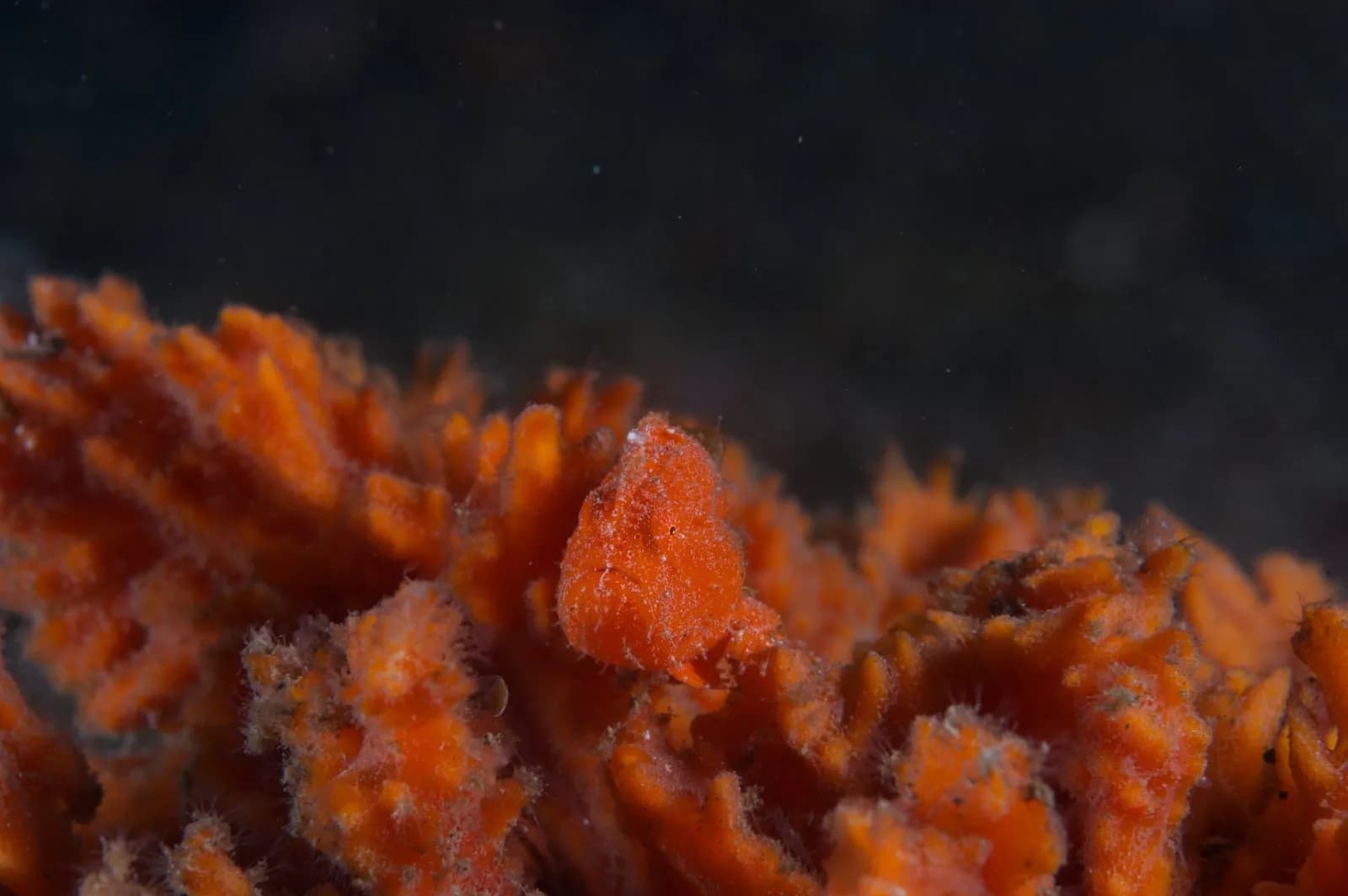
Have you heard about Muck Diving? Here we explain the wonders of muck, what it is, and how to dive into it….
The term “muck” actually takes its name from the sediment that lies on the bottom and it can be a mixture of sand, silt, or natural debris such as dead corals – ask any experienced muck diver – they will have probably seen them all. The Lembeh Strait in North Sulawesi is a volcanic region so our black sand makes for perfect muck diving.
What is Muck Diving?
Muck diving is something every seasoned diver should try and every macro-photographer NEEDS to try but beware, it can be highly addictive! After entering the water, which is often a little murky, don’t be surprised if it takes your eyes a minute or so to adjust. Keep looking down until the bottom comes into sight and then the fun begins.
As you swim along you have to focus very closely on the bottom searching for anything that looks like it doesn’t quite belong. There have been numerous times when novice muck divers have been known to swim over a “leaf” without realising it was actually a cockatoo waspfish – look at everything, and not just a cursory glance, study everything and look out for features such as a disguised fins or eyes.
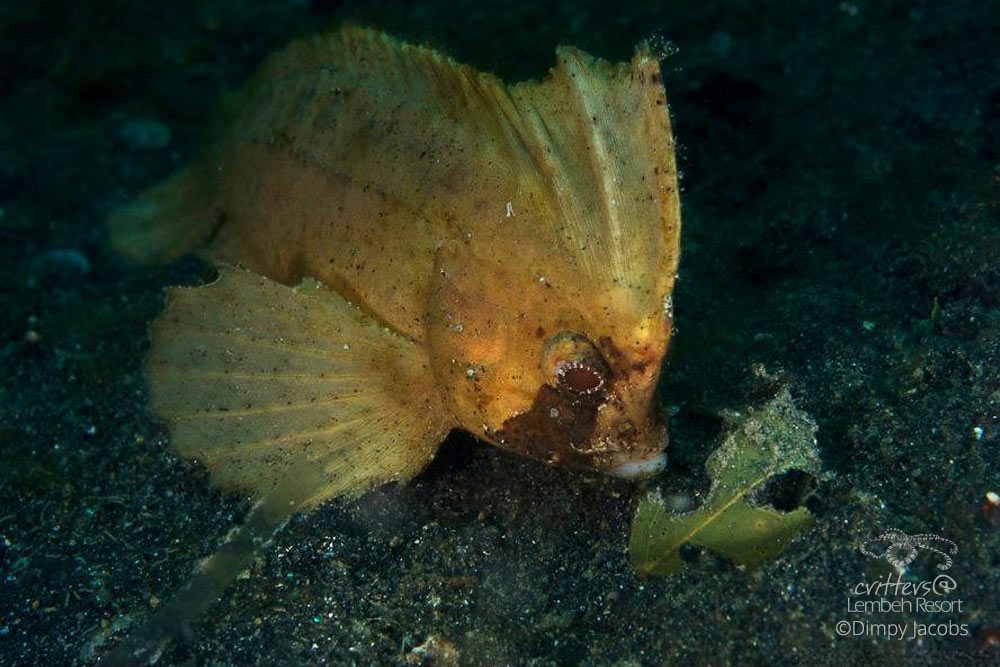
Cockatoo waspfish at Lembeh Strait, North Sulawesi Indonesia
Although the critters at muck diving sites are perfectly at home on the exposed bare sands, they often still seek shelter from currents and places to hide from predators. With limited options, this means that any foreign matter on the sand is a potential bee hive of activity – but only if you look hard enough. Amongst some of the best debris for finding macro ecosystems in Lembeh are dead tree branches, cans, bottles, ropes, and occasional anemones. Taking your time is of paramount importance when you are trying to spot critters on the muck. It is amazing how distracting a reef can be – muck diving forces you to concentrate much more intensely on much smaller areas.
Remember to Maintain Excellent Control of Your Buoyancy at All Times
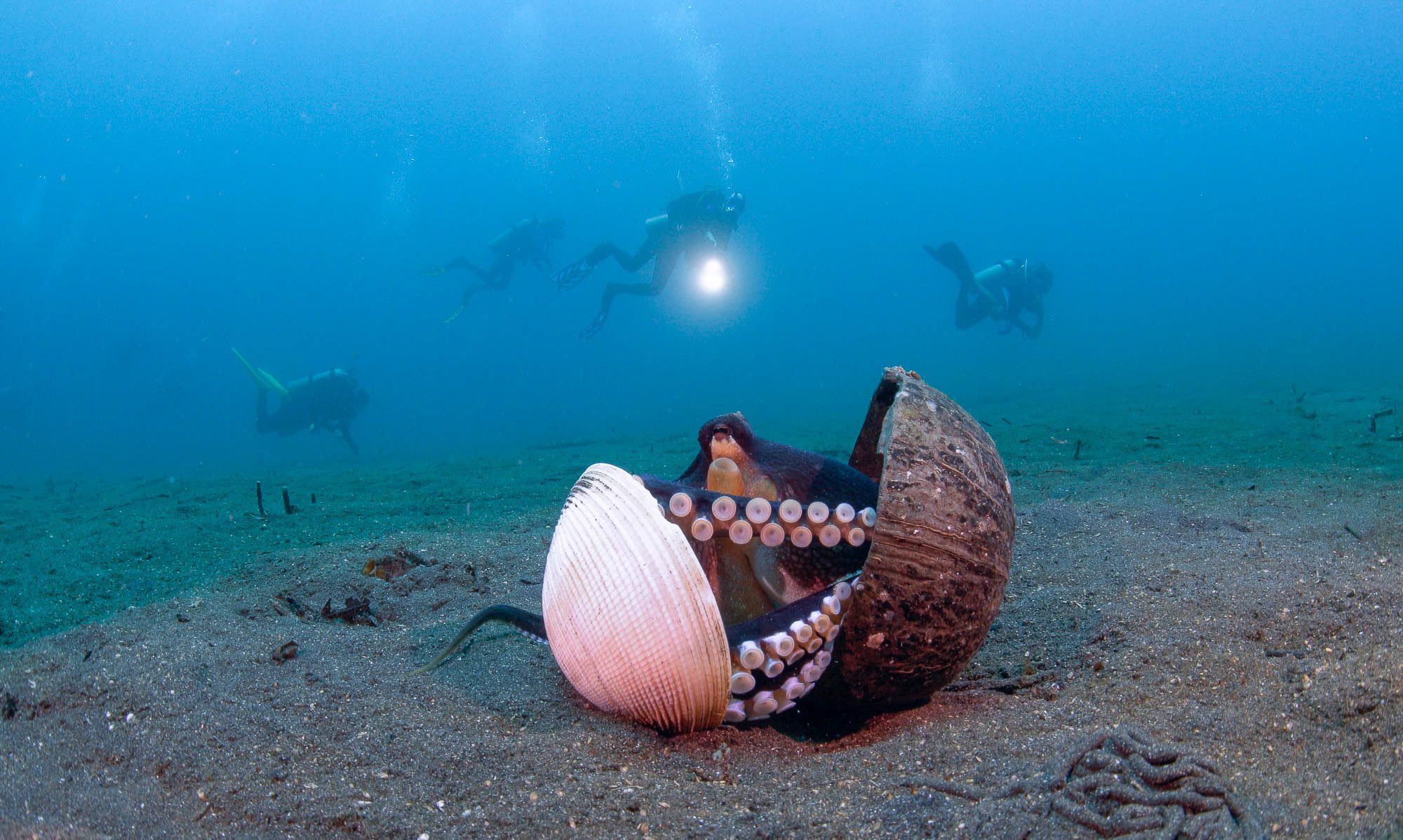
Maintain your buoyancy and position your fins up behind you when muck diving
Some marine creatures live just under the surface of the sand. The silty bottom is also VERY easily disturbed and a careless fin kick can result in a silt cloud which limits visibility and doesn’t bode well with photographers. The fine silt takes a much longer time to clear and settle on the bottom again unlike heavier sand which is made up of larger particles. For this reason, muck divers tend to adopt a finning technique similar to that used by cave divers.
You should aim for your body to be in a horizontal position but with your knees bent in such a way that your fins are raised up, above, and behind you. When finning, kick slowly – remember this is not a race and you need time to spot the critters. Use a Froggie-style technique keeping your fins raised rather than the more traditional “scissor kick” method that you may have been taught in your initial diver training. Every now and then take a look behind you to make sure that you are not leaving the wake of a silt cloud.
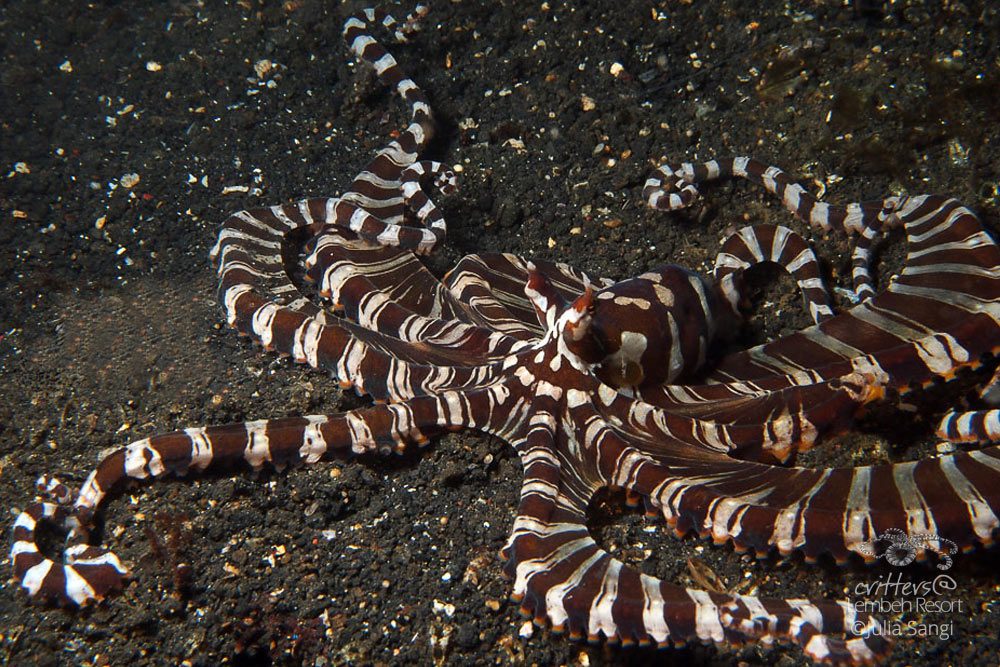
Wunderpus octopus at Lembeh strait, Indonesia
You may be wondering, “Is muck diving and going slowly going to bore me?” Absolutely not. The thrill you experience when you find a camouflaged critter is unbeatable – and once your eyes have adjusted it gets easier and easier to expect the unexpected.
Amongst some of the most unique and interesting critters you may discover here in Lembeh are such gems as blue ring octopus, coconut octopus, mimic octopus, and wunderpus octopus; numerous species of pipefish and ghost pipefish; frogfishes; stingrays; pygmy seahorses; a huge range of some of the weirdest and most interesting nudibranchs; scorpion and lionfishes; moray eels; stonefishes, mandarin fish and this is just to name but a few!
Read more: How to Mastering Buoyancy for Muck Diving
The Number of Crustacean Species You See on Each Dive Far Outweighs The Number of Fish
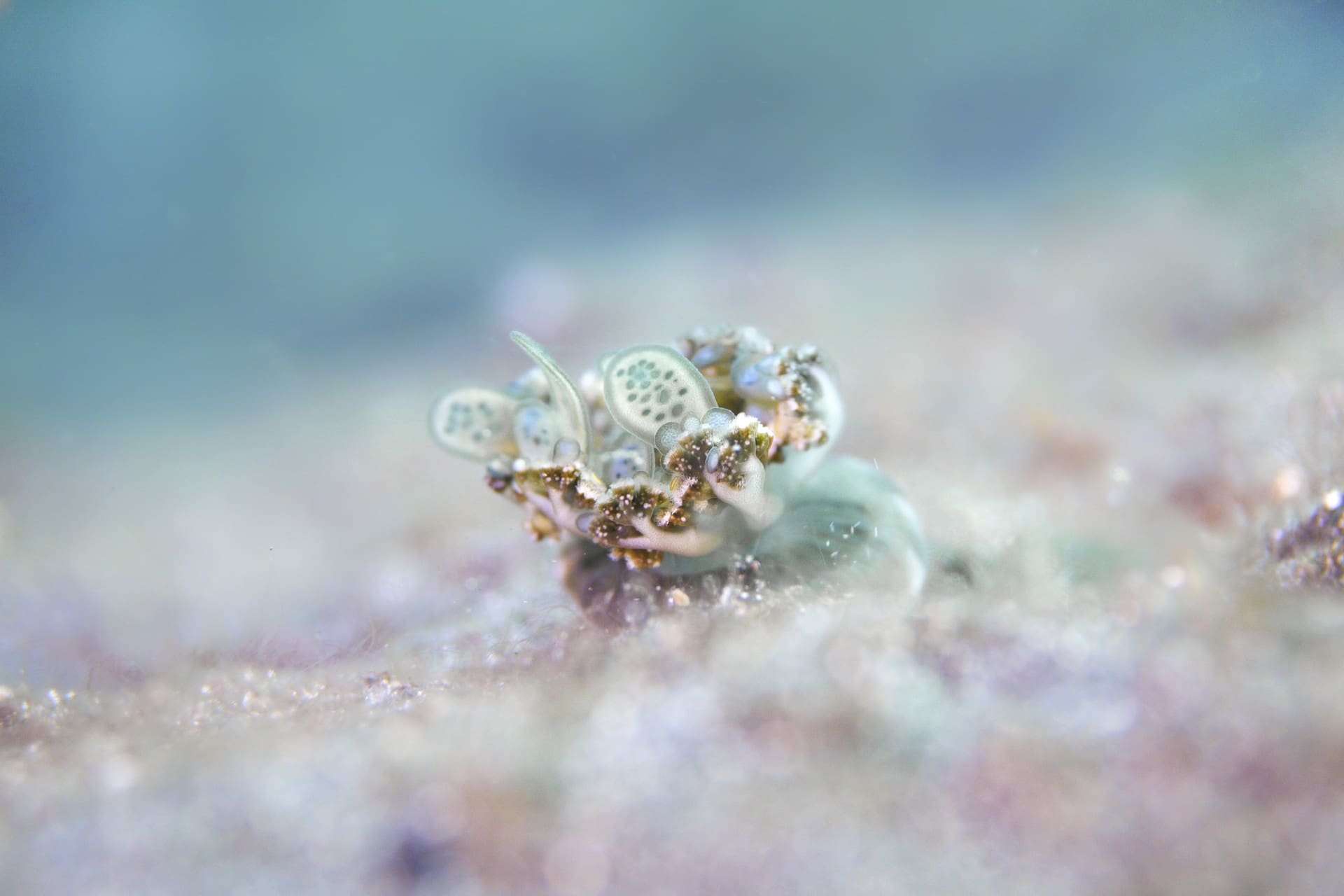
Jellyfish Crabs spotted at Lembeh strait
Commensal shrimps and cleaner shrimps are hardy species and can be found almost anywhere that there is marine life, other sought after crustaceans that you should be on the lookout for include mantis shrimps – both smashers and spearers; harlequin shrimp, marble shrimp, squat lobsters, upside down jelly fish crabs (yes, they really do exist!) and many different types of hermit crabs.
So if you are looking to expand your diving horizons, improve your photography or you simply want to see something new, muck diving is a definite “must try” and there is no better place to start than here in Lembeh. The Lembeh Strait is known as the “Mecca of Muck” and the “Critter Capital of the World” for good reasons!
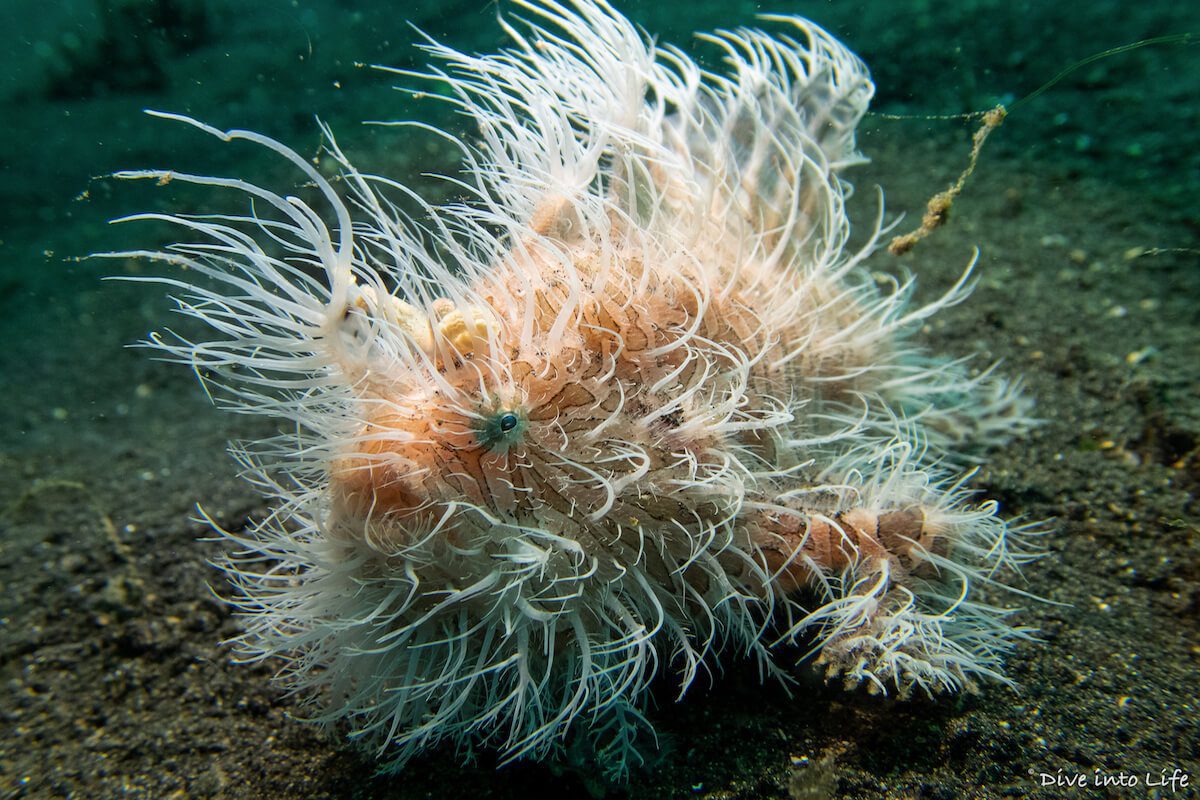
The hairy frogfish is one of Lembeh Strait’s most sought after critters
Did you know that Lembeh Resort is the only resort in the Lembeh Strait to have a marine biologist, a full-time and on-site Photo Pro, a dedicated Camera Room and Photo Centre, and all of our Dive Guides are marine biology and underwater photography trained?
Explore Lembeh Resort rates and secure your extraordinary dive adventure today! For more information or to make a reservation contact us at: reservations@LembehResort.com
Underwater Photography Workshop at Lembeh Resort
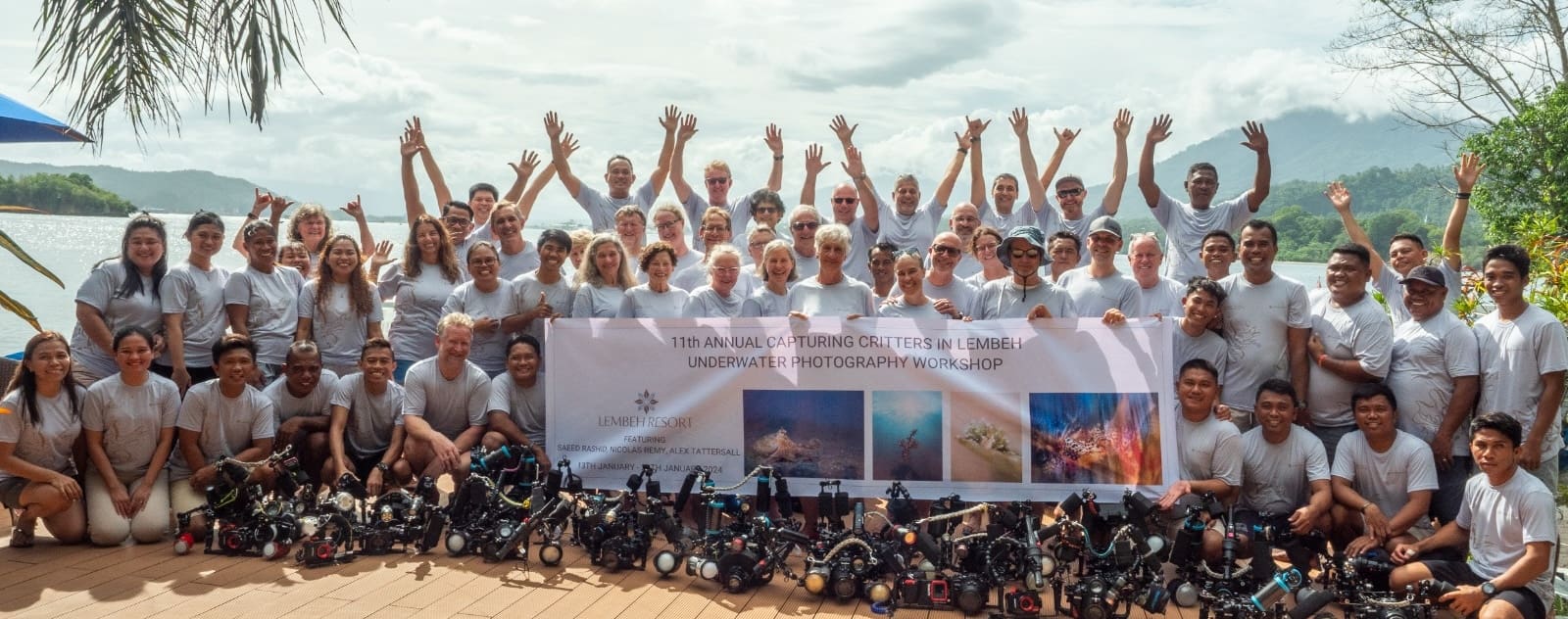
Underwater Workshop 2024 at Lembeh resort
Bring your Lembeh experience to a whole new level with our Underwater Photography Workshop!
Learn how to capture the mesmerizing beauty of regional marine life. Our expert instructors will introduce you to some must-know techniques and give you personalized tips on how to create unforgettable underwater photographs.
Don’t miss this opportunity to capture the beauty of Lembeh Strait. Sign up for our workshop today!
FURTHER READING
If you enjoyed reading this article, you may also enjoy some of our other articles about underwater photography and capturing macro imagery in the Lembeh Strait.
Find the Best Dive Lights for Lembeh Diving



